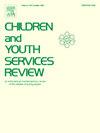Adolescent residential treatment outcomes: Changes in depressive symptoms throughout treatment
IF 2.4
2区 社会学
Q1 FAMILY STUDIES
引用次数: 0
Abstract
Depression is a highly prevalent and consequential mental health disorder that affects hundreds of millions of people worldwide. Unfortunately, rates of depression among youth ages 12 to 17 have continued to increase, especially when compared to older age groups. For some youth seeking treatment, a 24-hour, intensive, and multimodal treatment experience, such as those found in residential treatment centers, may be beneficial. However, limited studies have investigated changes in depressive symptoms in patients admitted into these programs. Therefore, the present study aimed to investigate change in depressive symptoms over time, as well as explore potential baseline characteristics that may be associated with intake depressive symptoms and changes in depressive symptoms throughout adolescent residential treatment. All patients (N = 3,562) were admitted between January 2020 and January 2023 and were given a battery of assessments at intake and every two weeks until discharge. This assessment asked about demographics, depressive and anxiety symptoms, and suicidal thoughts and behaviors. Results from the growth curve model indicated that depressive symptoms decreased over the course of treatment. Specifically, scores decreased faster at the beginning, and slower as time in treatment progressed. Additionally, there were sociodemographic and psychological comorbid predictors of intake depressive symptoms and change over time, including differences by age, race, length of stay, gender, anxiety symptoms at intake, and suicidal thoughts and behaviors. Our findings highlighted that adolescent residential treatment can produce decreases in depressive symptoms over time, even among a high-risk population, and that demographic and co-occurring psychological problems may be influential.
求助全文
约1分钟内获得全文
求助全文
来源期刊

Children and Youth Services Review
Multiple-
CiteScore
6.30
自引率
6.10%
发文量
303
期刊介绍:
Children and Youth Services Review is an interdisciplinary forum for critical scholarship regarding service programs for children and youth. The journal will publish full-length articles, current research and policy notes, and book reviews.
 求助内容:
求助内容: 应助结果提醒方式:
应助结果提醒方式:


